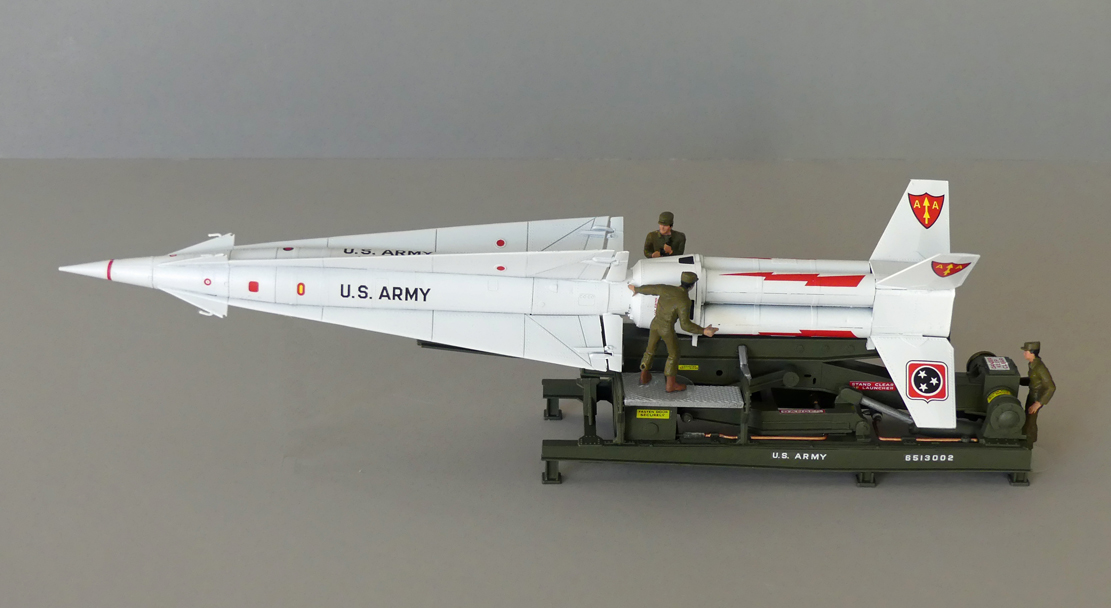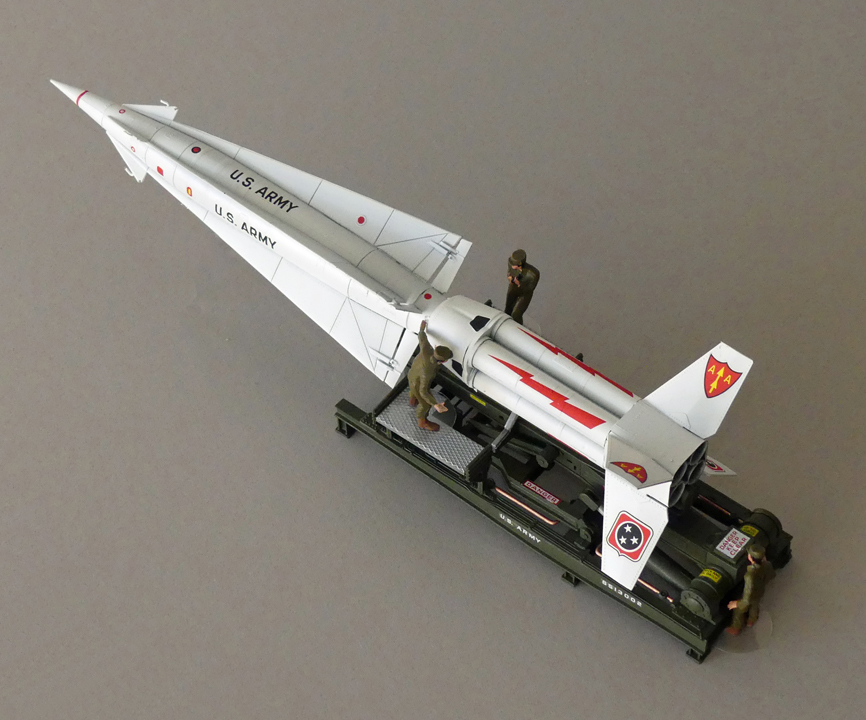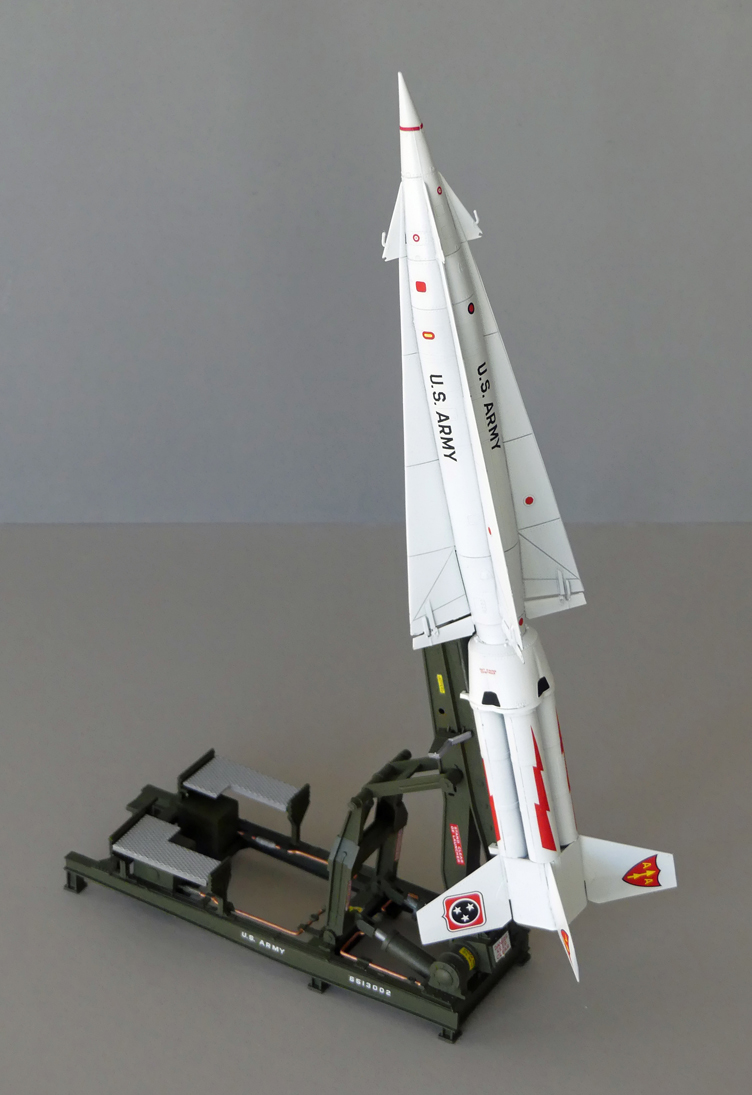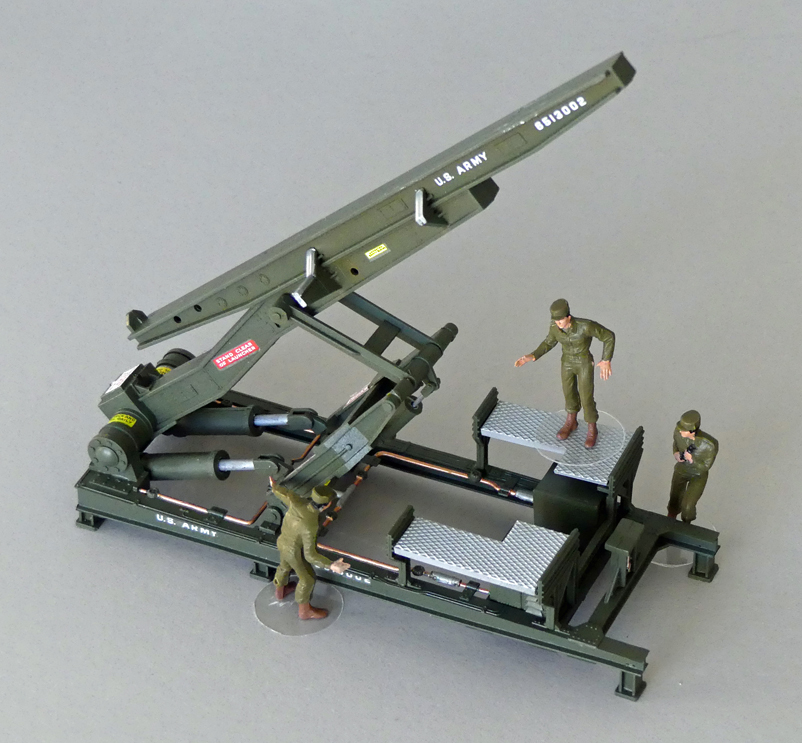

The Nike Hercules, initially designated SAM-A-25 and later MIM-14, was a surface-to-air missile (SAM) used by U.S. and NATO armed forces for medium and high-altitude long-range air defense. It was normally armed with the W31 nuclear warhead, but could also be fitted with a conventional warhead for export use. Its warhead also allowed it to be used in a secondary surface-to-surface role, and the system also demonstrated its ability to hit other short-range missiles in flight.
The development of the Nike Hercules was the result of close collaboration between Douglas Aircraft Company, Army Ordnance Corp., Bell Telephone Laboratory and the Western Electric Company. It was originally developed as a simple upgrade to the earlier MIM-3 Nike Ajax, allowing it to carry a nuclear warhead in order to defeat entire formations of high-altitude supersonic targets. It evolved into a much larger missile with two solid fuel stages that provided three times the range of the Ajax. Deployment began in 1958, initially at new bases, but it eventually took over many Ajax bases as well. At its peak, it was deployed at over 130 bases in the US alone.
Hercules was officially referred to as "transportable", but moving a battery was a significant operation and required considerable construction at the firing sites. Over its lifetime, significant effort was put into the development of solid state replacements for the vacuum tube-based electronics inherited from the early-1950s Ajax, and a variety of mobile options. None of these were adopted, in favor of much more mobile systems like the MIM-23 Hawk. Another development for the anti-ballistic missile role later emerged as the much larger LIM-49 Nike Zeus design. Hercules would prove to be the last operational missile from Bell's Nike team; Zeus was never deployed, and Hercules replacements were developed by different teams. Approximately 25,550 Nike Hercules were produced between 1957 and 1978.
Hercules remained the US's primary heavy SAM until it began to be replaced by the higher performance and considerably more mobile MIM-104 Patriot missiles in the 1980s. Patriot's much higher accuracy allowed it to dispense with the nuclear warhead, and Hercules was the last US SAM to use this option. The last Hercules missiles were deactivated in Europe in 1988, without ever being fired in a military conflict.
The best preserved Nike installation is site SF88L located in the Marin Headlands just west of the Golden Gate Bridge, north of San Francisco, California. The site is a museum, and contains the missile bunkers, and control area, as well as period uniforms and vehicles that would have operated at the site. The site has been preserved in the condition it was in at the time it was decommissioned in 1974. The site began as a Nike Ajax base and was later converted to Nike Hercules. Three Nike Hercules are displayed in the original bunkers. The base is open to the public, including demonstrations of the operational missile lift from the bunker to the surface.
Facts and General Characteristics of Nike Hercules:
Manufacturer: Douglas Aircraft Company, Army Ordnance Corp., Bell Telephone Laboratory and the Western Electric Company
Length: 41 ft. 6 in. (12.2 m)
Booster Wingspan: 11 ft. 6 in. (3.51 m)
Second Stage Wingspan: 6 ft. 2 in.(1.88 m)
Booster Diameter: 31.5 in. (800 mm)
Second Stage Diameter: 21 in. (530 mm)
Loaded Weight: 10,710 lbs. (4,860 kg)
Booster Power Plant: 4 x M5E1 Nike Boosters
Sustainer Power Plant: Thiokol M30 Rocket
Propellant: Solid Fuel
Range: 90 miles (140 km)
Flight Ceiling: 100,000 ft. (30,000 m)
Burn-out speed: >Mach 4 (3,045 mph; 4,900 km/h)
Warhead: W31 nuclear or conventional warhead
Facts and General Characteristics of the Model:
Manufacturer: Revell, Inc. Venice, California, USA (The History Makers Series)
Scale: 1/40
Parts: 67
Decals: 56
Missile Height: 12 in.
Missile Width: 3¾ in. at bottom of booster.
Launch Platform Width: 2¾ in.
Launch Platform Length: 8½ in.
Hours to build and paint (including crew figures): 13.8

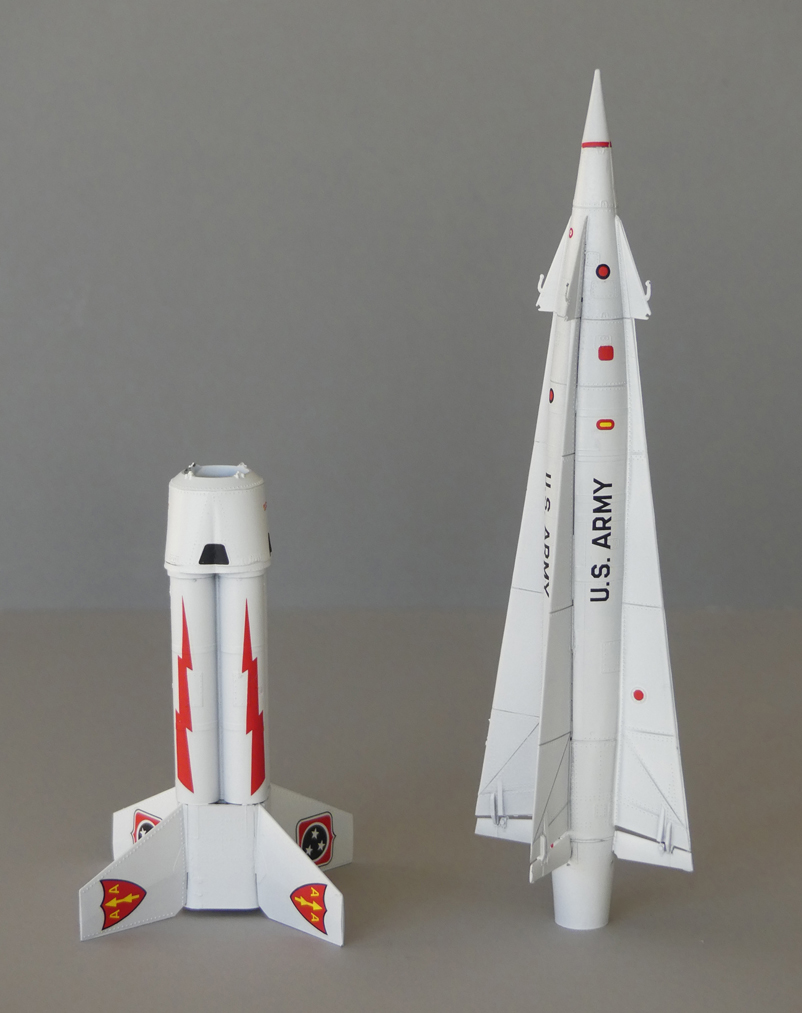
Booster and Second Stage
